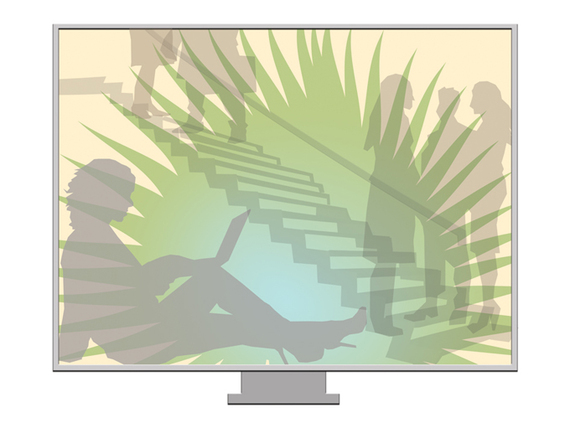

The World Green Building Council launched a new report on Health, Wellbeing and Productivity in Offices which presents overwhelming evidence that a range of office design factors -- from air quality and lighting, to views of nature and interior layout -- can significantly impact the wellbeing and productivity of staff.
Staff costs, including salaries and benefits, typically account for about 90% of business operating costs. Therefore, even a modest improvement in employee health or productivity, can have a huge financial implication for employers -- one that is many times larger than any other financial savings associated with an efficiently designed and operated building.
The current emphasis on improving employee engagement and wellbeing, puts workplace in a central role to promote physical and emotional wellbeing through providing increased flexibility and choice. As such, workplace design and policy are increasingly seen as an aspect of Human Resources to be considered alongside other organizational rewards, costs and benefits.
Both design of the workplace and behavioral aspects impact wellbeing at work. Creating greater awareness of how we work and providing choices of where we work, can help incorporate a variety of experiences and movement to improve the mind/body connection and increase employee wellbeing and engagement. How much do most of us really move at work? Whilst new technologies allow mobility, in most offices we feel surrounded by zombies. The average adult can sit for up to 11.5 hours a day, with most of this time in the office -- back bent, perhaps chair not set properly -- and only move to go to the printer -- if we do not have one beside our desk, or to go get some food to bring back to the desk and mindlessly eat in front of the terminal.
The consequences? Lower back pain, disc prolapse, gastro-intestinal problems, obesity and, ultimately, sick and absent employees. According toThe Integrated Benefits Institute, US workforce illness costs $576bn annually, due to sickness absence and workers' compensation. It seems reasonable to assume that a not inconsiderable percentage of these absences and illnesses could be linked to the consequences of sitting too much.
The National Institute of Health warned in 2012 that 'sitting is the new smoking' and recent research documents that the death rate among people who sit more than six hours a day is about 30 percent higher than those who sit for about three hours a day.
We need to change the design of our workplaces but also our entire attitude and behaviors at work to stop becoming office zombies. We need to consider physical movement as an integral part of the workplace: away with printers at desks, away with lunch at the desk, in fact away with the desk! What if we no longer had a fixed office or cubicle, but instead every staff member, at every level, had many choices of where to sit and how to work every day and throughout the day, based on the nature of the task. It is clear today that there is not one ideal environment for work. The optimum work environment changes across the day and across the week to support changing needs and give people control and choice of how and where they work.
To cope with the intensity of work today we need more access to quiet spaces to concentrate, think and recharge -- the nap rooms at the Huffington Post are very popular -- as well as access to flexible spaces for meeting, collaborating and socializing. We should change positions and spaces and stand up more often, ask ourselves if it's really necessary to do all of our tasks sitting on a chair. Standing desks are becoming fashionable, endorsed by everyone from Donald Rumsfeld to Google and after Victoria Beckham Instagrammed herself on a treadmill desk, orders went through the roof.
What about a standing meeting -- at Net a Porter all meetings are held standing up which focuses discussion on essentials only, or what about a meeting while taking a walk. Having choice of work settings, helps us move away from spending all day in the same position. What if we also gave everyone fitness trackers and used the workplace as an active environment to support personal fitness and wellbeing goals? Have team fitness and wellbeing competitions and make wellbeing a part of the working day rather than one more thing to squeeze into our demanding schedules.
There is clearly an opportunity for organizations to begin to think differently and use their physical premises for competitive gain. This is true from investors right through to occupiers, whether companies are trying to command a higher price for a high-performing building or looking to create the kind of space needed to help drive business success.
When real estate advisors CBRE planned their global headquarters in Los Angeles they focused on employee wellbeing by partnering with Delos to create the world's first WELL Certified™ office. Together they undertook a two year journey to design a workplace that encourages holistic employee wellness. In all, more than 120 new features were added under seven categories: the mind, comfort, fitness, light nourishment, water and air. This approach took into account passive design features like air quality and active design features like free address seating throughout, which means that from the CEO to the newest recruit everyone shares a variety of work settings to encourage motion.
Whilst workplace interiors are important, the base building design can also contribute significantly by using circulation and atria to enable movement. In New York, The Hearst Tower features staggered elevator access requiring employees and visitors to use stairways for a limited number of floors and the atrium features escalators which run through a 3-story water sculpture, which cools and humidifies the lobby air. In its Sydney headquarters, Westpac Bank is one of many Australian banks who have installed open staircases between floors to encourage more circulation, interaction and chance interactions and collaboration across the business and to support wellbeing.
David Rock author of bestselling book Your Brain at Work says that 'social interactions are delicious things to the brain' and that is why we are drawn to them, but he also stresses that:
Productivity is ultimately about choice and autonomy and if we give people the opportunity to move between different spaces to focus when they need, to collaborate when they need and to have great social interactions, we are giving them what they really need at work.
Work is inherently a social endeavor, and the purpose and health of great companies is centered around people, so creating places that provide for the wellbeing of people at work is critical for business success.
Illustration by Daniel Morgenstern.
